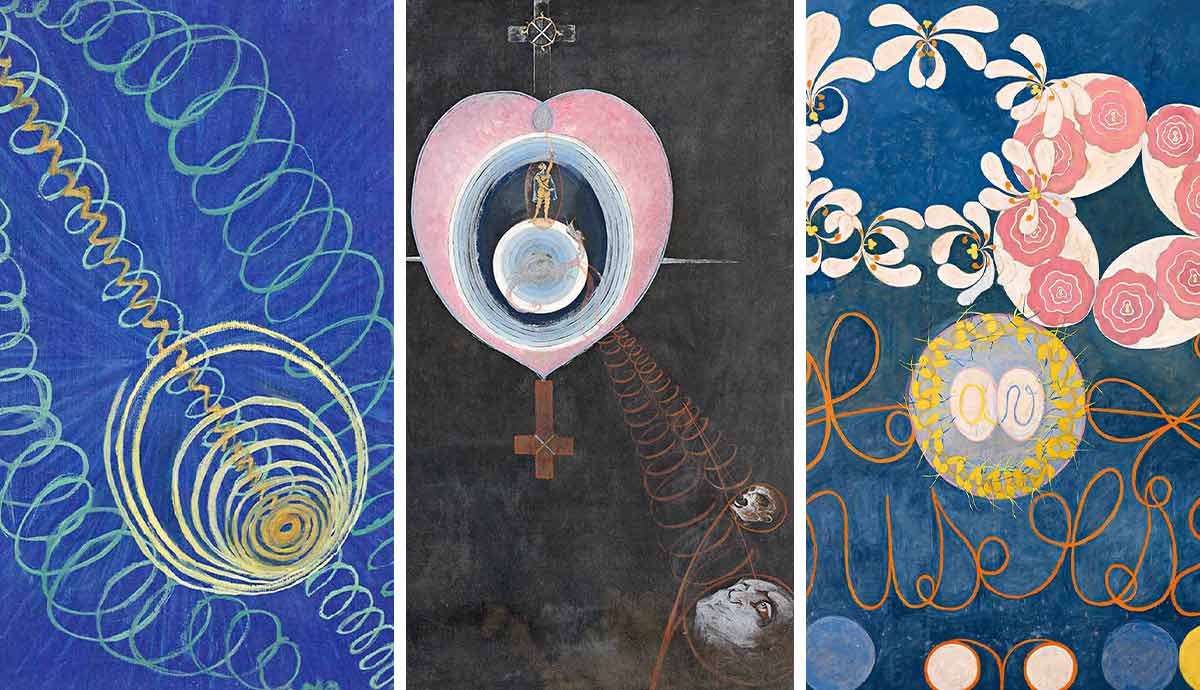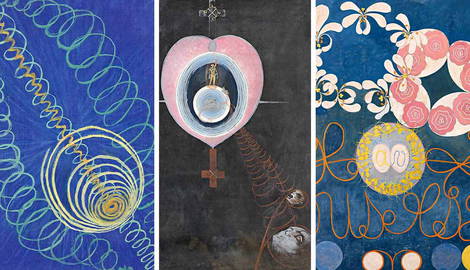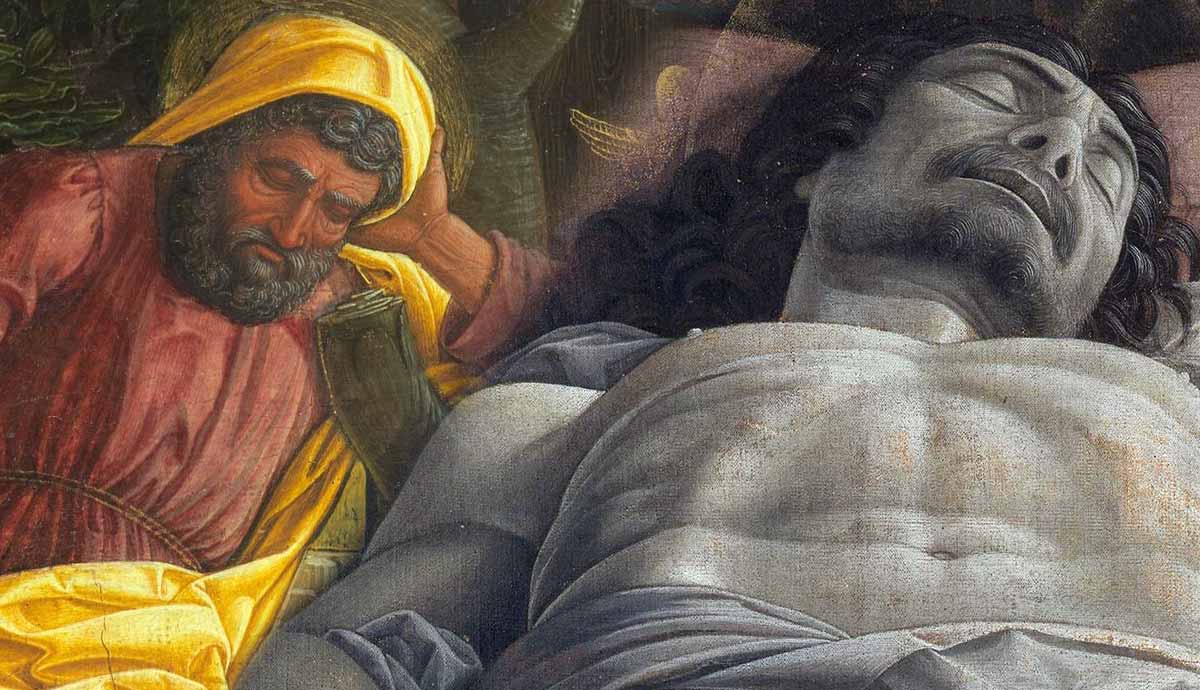
The Swedish artist Hilma af Klint finally received praise as the forgotten pioneer of abstraction. She had a profound interest in occult and spiritualist practices and spent years trying to decode images that were, according to af Klint, sent to her by the higher beings. In her extensive notes, she left a dictionary of symbols, colors, and elements. Read on to learn more about the hidden meanings in Hilma af Klint’s work.
Why Makes Hilma af Klint So Special?

At the time of Hilma af Klint’s birth, Sweden was a rural country steadily moving to industrialism. This ambition was reflected in educational reforms. In Sweden, women received the opportunity to obtain higher education in 1864. In comparison, the leading art academy in France, the legendary École des Beaux-Arts, started to admit women only in 1897. The legal opportunities for Swedish artists, however, still did not guarantee the absence of discrimination. The widespread belief persisted among the public and art academy officials, which stated that women were only inherently capable of copying and not of innovation.
Hilma af Klint was born in 1862 into a family of naval officers and cartographers. Her decision to become an artist was unexpected, yet she did not face opposition from her family. Some experts believe that the basic knowledge of cartography could have contributed to her later spiritual exploration and diagramming.

After finishing her studies at the Stockholm art school, Hilma af Klint established a career as a botanical and zoological illustrator. Apart from painting, she found a hobby: together with four other women artists she came up with a group called De Fem (The Five). The group conducted spiritual seances and Bible study sessions. During the seances, one of the women entered a trance-like state and spoke on behalf of spirits, sometimes even making automatic drawings. During another seance, spiritual beings Amaliel and Ananda allegedly contacted them, expressing their need to find a mediator between them and the human world. The mediator’s role was to record and pass on precious knowledge of spiritual matters. Hilma af Klint was the only person who agreed to do it. Soon, she would start her four-decade-long journey exploring the invisible and creating groundbreaking art, unlike anything the world had ever seen.
Hilma af Klint and Symbols

Hilma af Klint’s first series of abstract works was revealed to her in 1906. The passive voice in the previous sentence is not a mistake. The artist claimed that she could not control the painting process, as if someone else was guiding her hand. In her diary, she stated:
The pictures were painted directly through me, without any preliminary drawings, and with great force. I had no idea what the paintings were supposed to depict; nevertheless, I worked swiftly and surely, without changing a single brushstroke.
These paintings barely represented any recognizable figures and had no particular narrative. They were essentially the first abstract works in the history of European art. Over the next forty decades, she would continue her exploration, leaving behind over a thousand abstract paintings. Despite its general non-representativity, some elements were familiar. Among curvy lines and geometric forms, flowers bloomed, swans curled their long necks, and Christian saints appeared next to Buddhist mandalas. The problem was that Hilma af Klint had no idea what she painted. Struggling to decode the meanings of her work, she left hundreds of notebooks filled with thoughts and ideas. She even tried to seek guidance from prominent spiritualist figures of her time, but no one was able to help.
After years of research and exploration, Hilma af Klint actually managed to produce a dictionary of symbols present in her work. The descriptions were just as vague and confusing as her works, yet they still provided a glimpse into the true purpose and message of af Klint’s oeuvre.
Snail

A snail, or a spiral, is one of the most popular symbols seen in Hilma af Klint’s work, consistent throughout her entire oeuvre. The earliest appearance of it happened even before af Klint’s personal turn to abstraction, in automatic drawings of the De Fem group. Over the years, the symbol took different shapes, ranging from a recognizable biomorphic motif to a series of concentric circles.
In her personal notes, she left an explanation: the snail symbolized the universe, spiritual evolution, and the obstacles on humanity’s way toward it. Equalling a tiny snail shell to the entire universe was a reflection of a spiritual idea of the essential unity of all elements. According to a popular spiritual doctrine of the time, the smallest element of the universe was a direct reflection of the largest element in it—the universe itself.
During her communication with Amaliel, the being asked her to build a spiral-shaped temple to house her paintings. Unfortunately, Hilma af Klint did not live long enough to fulfill the project. However, her groundbreaking 2018 Guggenheim exhibition, which promoted Hilma af Klint’s oeuvre to the whole world happened in New York’s spiral-shaped temple of art.
Letters

One of the most confusing aspects of Hilma af Klint’s oeuvre is writing. Or, more precisely, what appears to be writing, perceived as a weird, almost unreadable combination of Latin letters.
According to Hilma af Klint’s diaries, these were not exactly letters, but different types of visual symbols, constructing clusters of meanings from several elements. The most important symbols were U, standing for spirit, and W, associated with matter. Their combinations also took on different meanings: UW represented higher spiritual love, and WU symbolized the concept of sacredness. The letters could be arranged in more complex and multi-faceted forms such as AVONVENER, the word to which Hilma af Klint referred to as the way for higher beings to pass on spiritual knowledge to the Earth.
Religious Imagery

Hilma af Klint had a profound interest in Theosophy, a philosophical system of beliefs that proclaimed the essential unity of all religions. Theosophists paid special attention to Eastern religions like Buddhism and Hinduism, believing that Western Christianity has discredited itself because of the Church officials’ greed and vanity. Nonetheless, Theosophist imagery often blended symbols borrowed both from the East and the West, with the recurring belief in their mutual complementarity.
Hilma af Klint remained a devout Lutheran Catholic throughout her life, yet in her earlier works the influence of Eastern religions is present and obvious. Her early Evolution series included mandalas and lotus blossoms while also experimentally applying the concept of Charles Darwin’s evolution to spiritual matters.
As Hilma af Klint grew older and began to add her own voice to her works, Christian imagery became more persistent. In 1915, she devoted an entire series of paintings to a dove, a Christian symbol of the holy spirit. There, along with perfect circles and zodiac signs, she painted several images of Saint George slaying the dragon.
Color Symbolism

Attributing certain meanings to colors was hardly a groundbreaking idea for spiritualists like Hilma af Klint. She was almost certainly inspired by the occult literature of her time, like the work of a British spiritualist Anie Besant Thought-Forms. Besant believed that color was the expression of thought and feeling. She also insisted, like most other spiritualists of the time, that the color black symbolized malice and corruption, and advised artists to refrain from its use.
Hilma af Klint and her masters had a different opinion about it. Her colors were associated with particular concepts and helped construct a narrative within her works. She never avoided using black, sometimes creating almost monochrome paintings with it.

The most important colors for Hilma af Klint were blue and yellow, which signified femininity and masculinity respectively. Blue represented strong nature and spiritual faithfulness, while yellow symbolized knowledge. The spiritual dichotomy of the male and the female was crucial for her, with many of her symbols having a binary opposition to them. Her first abstract series, The Primordial Chaos, was painted entirely in blue, yellow, and green. Other colors also had their designated meanings. Hilma af Klint believed that white was the holiest of colors, while brown signified unrest. Light blue represented the belief in truth, and bluish pink represented trust in one’s previous incarnations.
Hilma af Klint and the Language of Flowers

Despite the abstract nature of Hilma af Klint’s works, images of flowers, animals, and humans often appeared in her paintings. This might have been due to her first occupation as a botanical and zoological illustrator. Like blue and yellow, some flowers represented the dichotomy of the feminine and the male. Lily was a feminine flower associated with spiritual perfection and love. Rose, on the other hand, was a male symbol, with its meaning varying according to its color. A pink rose signified spiritual knowledge and devotion, a white one represented unselfishness, while a red rose was its direct opposite, a self-absorbed entity. A lotus stood for the Word of God, and cactus for the sacred Ararat mountain, where Noah’s Ark was allegedly buried.
Later in her life, the artist returned to botanical illustration. Instead of painting flowers with attributed meanings, Hilma af Klint decided to focus on spiritual portraits of these plants, diagramming their auras.










